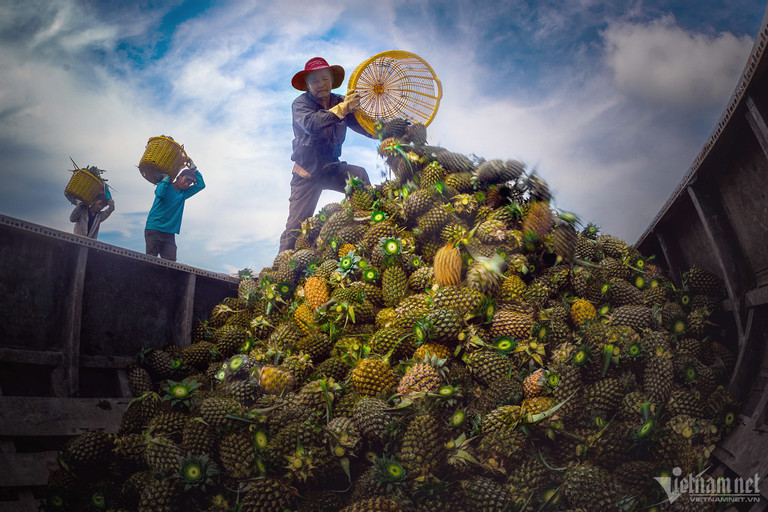
The latest report from the Ministry of Agriculture and Rural Development (MARD) showed that Vietnam exported $11.5 billion worth of farm produce to China in the last 11 months, or 23.2 percent of Vietnam’s total farm export turnover.
China, together with the US and Japan, continued to be the three largest export markets for Vietnam. China was the only market which recorded positive growth rate in farm export value.
As of the end of November 2023, vegetable and fruit exports to China brought turnover of $3.4 billion, which far exceeded the $1.5 billion in the entire year of 2022. Meanwhile, seafood export turnover to the market was $1.25 billion, cassava and cassava-made products $1.05 billion, rubber $1.97 billion, and woodwork $1.55 billion.
The other agricultural products with high export turnover included rice ($517 million), cashew nuts ($602 million), animal feed and materials ($519 million). Vietnam also exported coffee, pepper and tea in large quantities to the market.
Notably, Vietnam’s vegetable and fruit exports to China accounted for 63 percent of total vegetable and fruit export turnover, while cassava and cassava-made products were 90.5 percent and rubber 78 percent.
Some farm products witnessed high export growth rates to China in 2022. Woodwork exports were valued at $2.2 billion, up 43.8 percent, seafood $1.6 billion, up 61.2 percent, cassava $1.3 billion, up 17.2 percent, and rubber $2.4 billion, up 4.3 percent. Only vegetable and fruit export turnover decreased, to $1.5 billion.
In 2022, a series of protocols on exporting farm produce through official channels were signed, which cleared the way for Vietnam’s farm exports to China increase rapidly.
According to Deputy Minister of Agriculture and Rural Development Phung Duc Tien, it took Vietnam a long time to obtain the protocols on full-tax farm produce exports to China.
It is expected that four more farm products, including herbs, coconut, frozen fruits and watermelon will be exported to China through official channels rather than across border gates.
If this occurs, the first products could be exported to China on pre-Tet days. This will help increase farm produce export turnover in 2023 and the first months of 2024.
Recently, MARD and Chinese Guangxi province signed a protocol on exporting animals and building a disease-free zone on the border areas of the two countries to boost export of animals and animal products.
According to Doan Nguyen Duc, president of Hoang Anh Gia Lai Group, the durian shortage will occur fir next 10 years. This is a perennial plant and farmers can only harvest fruit after 6-7 years of cultivation.
China remains the largest market for Vietnam’s durian. Duc believes that there won’t be enough durian to sell, even if it is grown throughout the country.
He said there was no need to worry about markets for Vietnam’s durian. Vietnam needs to build brands and increase the recognition level in the international market.
However, analysts warned that this may lead to the scrambling for durian among merchants.
They stressed that farmers need to improve durian quality and organize production under a cooperation chain to ensure sustainable development and healthy competition. If this cannot be done, Vietnam will lose markets.
Phan Thi Tra My, chair of the Vietnam Provisional Business Association in China, said high quality should be a top priority when exporting durian to China. In addition, enterprises should spend time on branding to earn more money.
Minister of Agriculture and Rural Development Le Minh Hoan said that farmers should create durian varieties to fit the taste of Chinese consumers. In addition to selling fresh fruit, Vietnam should also think of exporting peeled durian for easier transportation.
According to the General Department of Customs (GDC), in 2022, Vietnam exported $421 million worth of durian, while in the last 11 months durian exports brought turnover of $2 billion.
Tam An